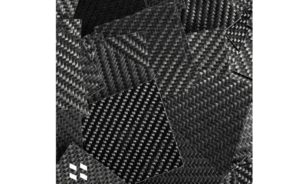Almost a year ago, Benjamin Saada (CEO, Fairmat) announced during the inauguration of our factory that “we will be able to upgrade our manufacturing process at the factory like a firmware update on your phone.”
Today, we can confirm that technology, such as the one discussed in this article, enables us to do precisely that.
In this article, we’ll explore how our expert engineers use ‘hardware-in-the-loop (HIL)’ technology to test and refine software from our lab or anywhere else, which is then used to operate the hardware at the factory 400 km away to manufacture our products.
Jump to this section if you’re familiar with the basics of how simulated testing and hardware-in-the-loop work: Why does Fairmat test its software?
If not, then the following section illustrates the fundamentals of HIL using a common example.
Airplane analogy and simulated-testing terminology
To understand the need for simulations, consider how they’re used in testing an airplane’s auto-pilot system:
- The auto-pilot = Controller. It is the controller hardware that will be onboard the actual aircraft, making decisions about how to fly the plane based on the sensor data.
- The firmware inside the auto-pilot = Control logic. Set of rules or algorithms programmed into the auto-pilot, for example, to automatically activate leveling when the wings are out of level.
- Control system (or process) = the combination of the auto-pilot (controller) and the actual aircraft systems (like engines, flaps, etc.) that it controls.
In the development of systems similar to or more complex than the one in our example above — the controls (logic) are tested numerous times before the final release for different inputs to ensure that every use-case meets the requirements.
But what happens when testing physically is simply not an option? As is with our airplane example, it is far too risky to determine whether the auto-pilot will respond correctly to the controls by flying it.
So, in order to test the controls without involving the actual system, we set up a simulation (a Digital Twin) of that real system and test against it. Now, let’s dig deeper into how we do it for our factory robots.
Hardware-in-the-loop (HIL)
If we had to test the airplane’s auto-pilot system without actually flying it, we could:
- Simulate the real aircraft systems (like the flaps and engines) for real-world flying conditions (like turbulence, etc.)
- Connect the simulation to the auto-pilot hardware (the controller) we plan to test (therefore, hardware in the ‘loop.’)
- The auto-pilot receives data from the simulation and applies logic to make decisions on how to fly.
- The results of these decisions are applied back to the simulated system, demonstrating how the “plane” behaves.
- Engineers can tweak the control logic for unsatisfactory results and retest.
- And this, in a nutshell, constitutes an HIL test.
At Fairmat, hardware-in-the-loop (HIL) helps us test and validate complex software to develop complex controllers operating manufacturing robots.
In HIL testing, the software is tested in real-time against a simulation modeled after a real-life robotic system, which is a mix of physical and virtual test components.
Unlike regular simulation, HIL allows us to test some of the actual hardware, such as the sensors, and emulate other components, like the robotic arms.
By definition, “Hardware-in-the-loop simulation (HIL) is characterized by the operation of real components in connection with real-time simulated components. Usually, the control-system hardware and software is the real system, as used for series production. The controlled process, consisting of actuators, physical processes, and sensors, can then be either fully or partially simulated.”
Why does Fairmat test its software using HIL?
The inherent risks of physical testing have primarily encouraged aerospace and automotive manufacturers, in particular, to implement HIL testing. Startups, however, may need more resources to implement the same.
On the other hand, the growing demand for HIL testing in the robotics industry is also relatively new.
As for Fairmat, we use HIL testing to enhance productivity and free up our hardware robots by reducing the cycle times.
We’ve always referred to Fairmat as a ‘DeepTech.’ We don’t just recycle and manufacture advanced composite materials — we also build the technology that makes it all possible.
We are the first in the industry to use robotics and data-driven technologies to recycle composite waste and to use proprietary information technologies to design and build custom parts and products from that reclaimed composite.
Our recycled material’s application ranges from standard sports equipment to elaborate automobile parts — a diverse mix that must be developed accordingly. And the same goes for the control algorithms to develop that mix.
HIL helps our engineers identify and fix all defects and errors in the software in the technological development stage itself and before it runs in the potentially expensive hardware.
Without HIL, we would also run the risk of damaging the hardware or even compromising safety if the code under development does not operate as intended.
We would lose a great deal of time and resources without hardware-in-the-loop, having to wait every time for the prototype to be completed before testing the system.
HIL allows us to lower the cost of innovation and develop a better-finished product by accounting for the complexity of the final product in the code itself.
Currently, with the HIL technology, a typical product development process can be broken down as follows:
- Software engineering teams develop the software features according to customer product (material) requirements (such as chip size, thickness, orientations, etc.).
- The features then undergo rigorous testing to verify their stability in changing conditions.
- After that, the validated firmware is used by the Production team and can be further optimized based on their feedback.
In summary, hardware-in-the-loop allows Faairmat to:
- Build an algorithm specific to each client’s requirements and product specifications.
- Test it extensively and repeatedly for performance and compatibility of design against the simulation. Test new networking protocols and new pieces of interfacing hardware (such as vacuum generators).
- And then replicate it in the current manufacturing process.
Fairmat’s product and service offers come a full circle, i.e., we are able to close this loop of recycling and repurposing based on these proprietary technologies our teams developed over the years.
Within a month, our teams have reduced the development cycle times of a feature from 2 weeks (which requires the travel to our factory) to 2 days, in part due to HIL testing. The testing has helped us increase the quality and reliability and meet safety requirements.
HIL has also helped us identify manufacturing bottlenecks and opportunities and enhanced our attention to detail.
We are now able to share the HIL test results with our OEM clients, which has opened up a new avenue for collaborative development.
Wish to learn more about this technology and its setup? Request more information from our Tech teams!




